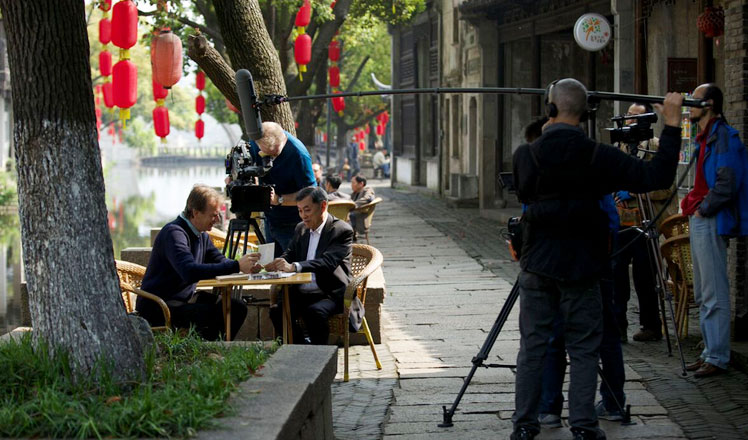Reviving Jiangnan’s lost folk crafts
Updated: 2016-01-26 09:29
By Wang Kaihao(China Daily)
|
|||||||||||
The geographic area of Jiangnan, which is to the south of Yangtze River, figures in many Chinese novels and history books.
The Hangzhou-based China Academy of Art, which is a government school in the provincial capital of Zhejiang, is now offering more on the area's lifestyle by way of a folk crafts museum on its premises. The museum that combines old Jiangnan aesthetics with modern design was opened in September.
Kengo Kuma, a Japanese architect, mixed elements of traditional houses and contemporary styles to shape the space. The 2,000-square-meter exhibition hall, for example, resembles a local village. The way in which Jiangnan's earlier residents lived are visible as one just enters the museum.
The World of Crafts in the Countryside of Jiangnan is the museum's exhibition.
Museum director Hang Jian says he didn't select the exhibits based on their value as cultural relics alone but also by judging their designs. It is worth reminding society to "pay more attention to traditional craftsmanship and lifestyles", he adds. The museum is among the country's largest such attempts at preserving folk crafts.
"A museum usually shows the finest pieces it collects to reflect the best techniques in preservation," Jin Xiaoyi, co-curator of the ongoing exhibition, says of the daily-use items shown here, in a marked departure from approaches of other museums on intangible cultural heritage that emphasize the longevity and complexities of such processes.
The idea behind such displays is to celebrate grassroots artisans "who are closer to ordinary people" rather that just having the works of "top masters with comfortable lives", she says.
Hundreds of Chairs with Hundreds of Forms, a part of the exhibition, has chairs with various functions collected from local communities.
"Chairs are an important component of industrial design and reflect people's lives," Jin says. "Their simple shapes actually contain complex design theories and show an artisan's skills."
Following on the same lines is another part of the exhibition called Study the Phenomenon of Nature, which includes some 100 old window panes. And while they don't come with delicate wood carvings, their simple structures reflect traditional styles and their potential usefulness in the modern world. Such window panes are rarely seen in today's China.
"Children now don't have the luxury of being cared for in such a manner," Jin tells China Daily, while pointing at some delicate chairs for children on show.
In another section-Tao in Daily Use-a dazzling kaleidoscope of baskets, tools, dinnerware and other items are presented to depict a story of simplicity. Many of the exhibits here appear closer to contemporary tastes even if they belonged to the early 20th century or earlier.
"When today's Chinese talk about gadgets with delicate designs, they often think of Japan," Jin says. "I want them to know we also once had many such designs. But war, social upheaval and other reasons led them fade away from society before we noticed."
Related Stories
Art exhibitions in 2016 worth seeing 2016-01-25 15:47
City Book art now at Hong Kong hotel 2016-01-25 15:42
'Drifting Civilization' art exhibition held in Beijing 2016-01-24 10:00
Wenjiang Art Gallery to open 2016-01-22 15:20
Yuxi Art Academy hosts art exhibition 2016-01-22 14:58
Today's Top News
China's growth envy of developed world
Foreigners find hard to but China's rail tickets
Rags to riches saga underlines China's transformation
Leaders address Iran's thirst for growth
UK's interest in China boosted by BBC TV series
Global push
AIIB chief vows to run clean, lean, green institution
'More Europe' to deal with 'triple crisis'
Hot Topics
Lunar probe , China growth forecasts, Emission rules get tougher, China seen through 'colored lens', International board,
Editor's Picks

|

|

|

|

|

|







